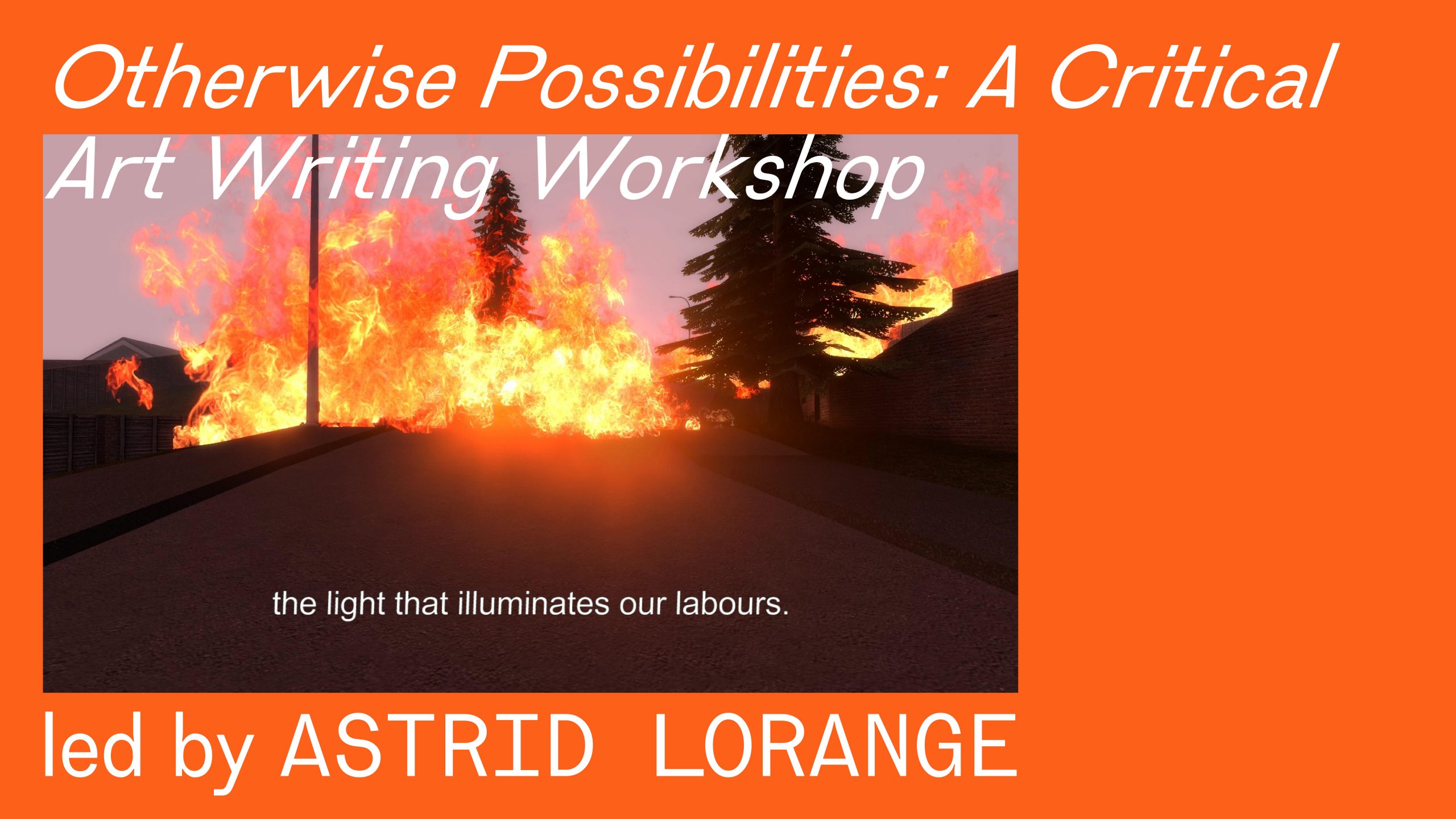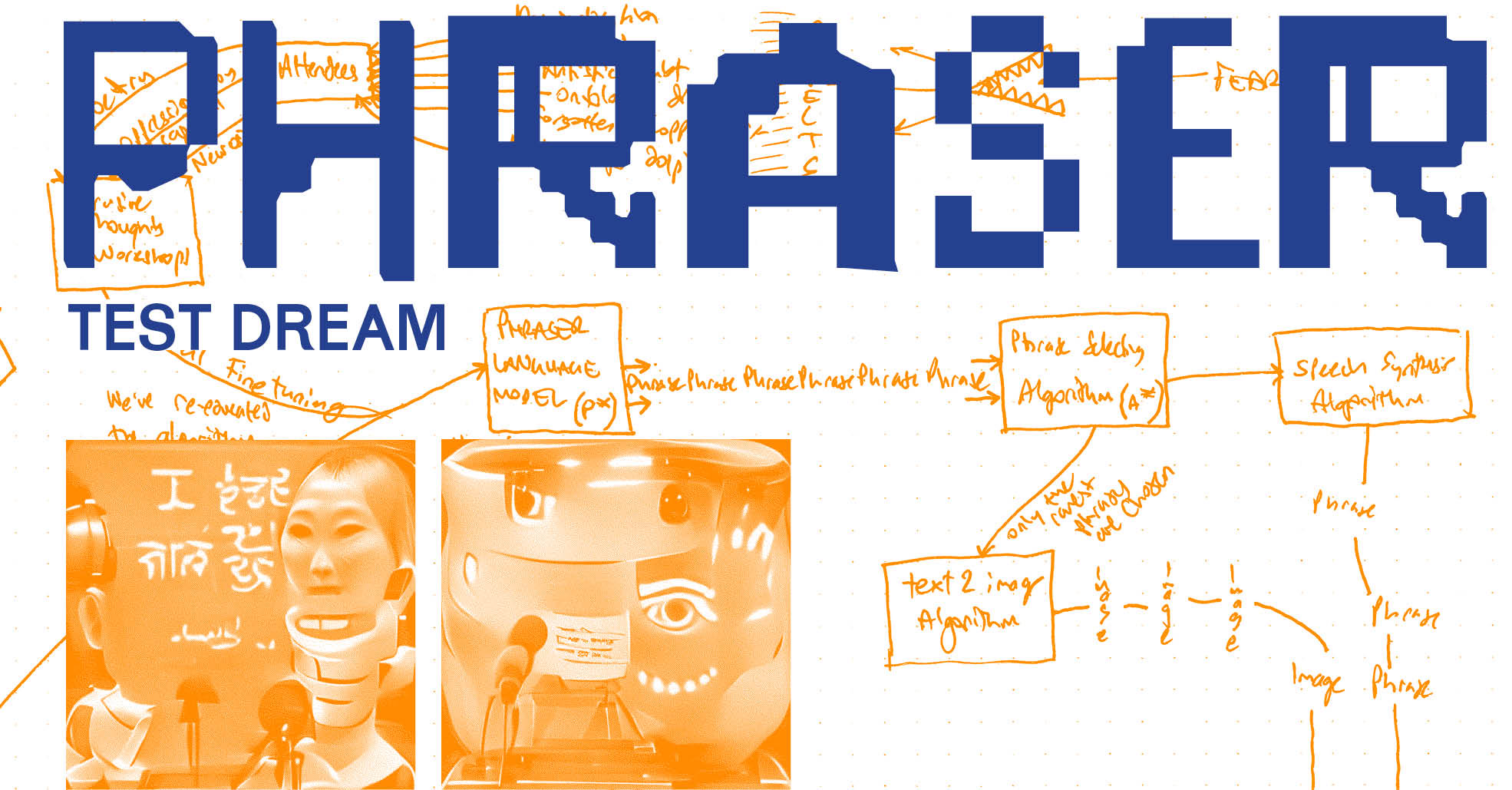In the direction of a hum
Olga Bennett
I am going to hum my way through the following six weeks, or however long this is going to take now.
In the second Melbourne lockdown, I am rereading Lauren Berlant’s Cruel Optimism, a book for an exhausted body, my exhausted body. My brain is mushy but invested in the idea of humming that stayed with me since I read Berlant for the first time while recovering from a bicycle accident, another kind of shattering. I seem to remember this idea of humming was important—even helpful to me then—and I want to recover it.
Just prior to the first lockdown, I remember watching Medium Earth, a 2013 essay film by the Otolith Group installed at Buxton Contemporary. I was working at the gallery, tasked with invigilating an exhibition by the London-based duo. I took it in slowly, one work at a time, making sure I didn’t run out of things to watch and think about too quickly, which is why I didn’t get around to reading a collection of letters comprising a companion work that occupied the adjacent room, titled Who does the earth think it is? (2014). I have never considered the possibility it would not still be there the following week, or that I myself would not be coming back the following week, with all the time I needed to read them.
Having never lived in a place with notable seismic activity, the notion of the unstable ground evoked in Medium Earth remains an abstraction to me, a metaphor from elsewhere. The film is narrated by Earthquake Sensitive, a voice for the seismic psyche. She tunes into and voices the geological unconscious of Southern California. Her body sensitive to turbulence and fractures, to the constant movement of the ground under our feet, she reminds us it’s always shaky; we walk the surface of a planet that is remaking itself constantly, but we forget. The letters in Who does the earth think it is? (2014) are unsolicited earthquake predictions sent in by members of the public, people who are less prone to this amnesia.
Despite my own coming of age in the midst of the dissolution of the political and ideological reality that was Soviet Union, it turns out I still maintain a strong attachment to the notion of continuity. The pandemic poses an imminent threat to my sense of self and exposes my optimistic attachments, causing “the loss of conditions that have undergirded [my own version of] good-life fantasy.”1 Who do we think we are and how easy it is for us to let go of that idea?
•••
In her book What Should We Do with Our Brain? Catherine Malabou traces plasticity to its origin in Greek (plassein—to mould), explaining that it defines the capacity to receive and give form at the same time. A defining characteristic of our brains, plasticity is radically different from flexibility—the ability to receive the imposed form—which for Malabou is ‘‘plasticity minus its genius”.2 Restoring plasticity’s full potential, she highlights a connotation particular to its meaning in French where it also describes the capacity to “annihilate the very form it is able to receive or create”:3
The word plasticity . . . unfolds its meaning between sculptural molding and deflagration, which is to say explosion. From this perspective, to talk about the plasticity of the brain means to see it not only as the creator and receiver of form but also an agency of disobedience to every constituted form, a refusal to submit to a model.4
Neuroscience insists that our brain is re-formed by what we do with it, that we are engaged in a continuous process of self-reworking. For Malabou, the activity taking place in our plastic brain is poetic at its core: “poetic” here should be understood not as “pertaining to poetry”, but closer to the literal meaning of the Greek poietikos—“creative, productive”, from poiein—“to make”.5 Through processes of scarring, compensation and regeneration, our brains are capable of building natural prostheses: “the plastic art of the brain gives birth to a statue capable of self-repair.” Malabou notes that that resilience goes beyond the reparative, and has “a logic of self formation starting from annihilation of form . . . a psychical process of construction, or rather of reconstruction and self-reconfiguration, developed simultaneously against and with the threat of destruction.”6
Berlant offers a rich, metaphor-laden vocabulary to describe the various ways in which such threats unfold in the affective register of experience. Throughout her book, she surveys how subjectivities slowly fray and dissipate in response to constant pressures from the environment, noting that “maintaining footing” sometimes demands doing the work of maintaining one’s own shape, holding oneself together in the face of disturbances, while at other times it is necessary to allow oneself to fragment, explode, splinter and then find “new modes of composure”.7 Berlant writes of a kind of agency she calls lateral—agency “without full intentionality”8 —expressed through adaptation, gestures of adjustment and improvisation. Lateral agency suggests poetic acts of reassembly that might follow an experience of unraveling—of a self that is finding a new form for coming together with a reimagined set of memories to form a new history.
Berlant reads an early version of a poem by John Ashbery (later titled Ignorance of the Law is No Excuse) as an invitation to be open to the transformative potential of disruptive encounters. The lyric, she argues,
opens up an opportunity to learn to pay attention to, have transference with, those moments of suspension in which the subject can no longer take his continuity in the material world . . . for granted9
In the poem’s closing lines—“We were lost just by standing/listening to the hum of wires overhead”—Ashbery’s speaker opens up to the sound of resonance in his surroundings. Berlant imagines him joining in, developing humming into a metaphor for openness and collaborative, improvisational not-knowing.
•••
Humming stimulates the muscles at the back of the throat that connect the vagus nerve. The sound vibrates against the edge of oneself, against lips, cheeks, throat, cranium, heart. You hear the sound from within. The nerve sends neurotransmitters and electrical signals, lowering activity in the part of the brain that governs flight, fight, and freeze.10
For Sharifa Rhodes-Pitts, humming is not a sign of ease and openness, but a way of carrying yourself over to the other side of a threatening situation that might or might not become traumatic. If we think of humming’s relation to language, it foregrounds the expressive physicality and acoustic qualities of an utterance, at the expense of signification and content. Michael Taussig describes it as “a base state of the voice, humming being neither conscious nor unconscious, neither singing nor saying, but rather the sound where the moving mind meets the moving body”.11
The plasticity of our brain, our knowledge that it continuously remakes itself in response to situations we find or put ourselves in, puts additional weight of responsibility on our actions. The title of Malabou’s essay What Should We Do with Our Brain? contains a double provocation, suggesting that we might be in a position to choose, and that ‘we’ might be positioned not within our brains, but elsewhere. Neuroscience maintains that within us, the brain is not the central source of agency it was thought it to be. Malabou reminds us that how we understand the brain has influenced how we think about our political system, urging us to reconsider and update our metaphors.12 The notion of centrality is a significant epistemological obstacle to our imaging of political alternatives and how we might move towards them.
In humming, where the moving mind meets the moving body, we negotiate how to maintain our footing and bearings amid unraveling, on shaky ground, as life “presents itself ambivalently, unevenly, incoherently”.13 It’s impossible to hum towards a goal, and so in humming, we can finally free ourselves from the powerful pull of our attachments, allowing the activity and movement of humming to re-sculpt us without our being able to image the final result. When I hum, I recompose myself, even when I don’t have a picture of what I am moving towards, or what the recomposed me will be. When I write, I find my way through these paragraphs even though I don’t have a clear understanding of what I am trying to achieve. When I go to a protest, my decision to join is not always guided by what my participation will contribute in practical terms. Instead, like humming, these actions are guided by a relationship of attunement and resonance.
Do we hum sideways? To sidestep? If there is no central source of agency within ourselves, only a poetic process of re-composure and plasticity at work on maintenance and self-repair, humming might be a form of lateral, improvisational exploration of elsewhere, feeling out “the alternative routes of living” through gestures of adjustment.14 Is our investment in the pervasive logic of forward movement, in the idea of development as progress, yet another obstacle to our activity of world re-making? Our conviction that it happens through planned strategic action with a clear goal in sight might be an ideological screen that not only blocks our vision but gets in the way of our bodies as they try to move. We continue to train our eyes on this screen instead of looking at the wires above our heads and humming with them, receiving what comes as we receive sound and re-tune in response.
Elizabeth Freeman writes that “the unpredictable, deeply embodied pleasures . . . counter the logic of development.”15 Is humming a source of such pleasure? Or a pathway towards it? If humming doesn’t have content, does not signify, it is easy to overlook when our attention is trained on reading. And yet it’s worth looking, or—even better—feeling into it: it marks an empty but active and generative space for collaborative unknowing and its unpredictable potential.
1. Lauren Gail Berlant, Cruel Optimism (Durham, N.C.: Duke University Press, 2011), 21. 2. Catherine Malabou, What Should We Do with Our Brain? (Ashland, Ohio: Fordham University Press; London: Eurospan [distributor], 2008), 12. 3. Ibid, 5. 4. Ibid, 6. 5. “Poetic,” Online Etymology Dictionary, n.d., accessed January 30, 2019, https://www.etymonline.com/word/poetic. 6. Malabou, What Should We Do with Our Brain?, 76. 7. Berlant, Cruel Optimism. 8. Ibid, 18, 100. 9. Ibid, 36. 10. Sharifa Rhodes-Pitts, “The Music of the Spheres,” e-flux Journal, no. Journal #105 (December 2019), accessed June 12, 2020, https://www.e-flux.com/journal/105/302721/the-music-of-the-spheres/. 11. Michael Taussig, “Humming,” in Voice: Vocal Aesthetics in Digital Arts and Media, (Cambridge, Mass.: MIT Press, 2010), 312. 12. Malabou, What Should We Do with Our Brain? 13. Berlant, Cruel Optimism. 14. Berlant writes of ‘practices that feel out alternative routes for living without requiring personhood to be expressive of an internal orientation or a part of a political program advocating how to live’ and later about ‘lateral exploration of elsewhere that is first perceptible as atmosphere’. Ibid., 20. 15. Elizabeth Freeman, Time binds, or, erotohistoriography. (2005), Social Text 23(3/4, 84/85): 57–68.
Olga Bennett is an artist and writer from Russia currently living and working in Narrm. She graduated with a Bachelor of Fine Art (Honours) from the Victorian College of the Arts in 2017 and exhibited at Bus Projects, CAVES, Center for Contemporary Photography, The Substation, KINGS Artist-Run, Monash Gallery of Art, C3 Contemporary, LON and Margaret Lawrence galleries (all in Melbourne), COMA gallery (Sydney), CalArts gallery (Los Angeles) and gallery Kiitos (Japan). Her writing was published in Art&Australia, Un Magazine and other places. Her most recent body of work considers how experiences of physical and emotional vulnerability are reflected in images and words.








